Bayangkan uang Anda berkembang perlahan tapi pasti, seperti pohon yang tumbuh kokoh. Investasi rendah risiko menawarkan ketenangan pikiran bagi pemula. Tidak seperti roller coaster saham, pilihan ini lebih stabil, mengurangi guncangan finansial yang tak terduga. Dengan pemahaman yang tepat, Anda dapat membangun pondasi keuangan yang kuat, bahkan dengan modal terbatas. Artikel ini akan memandu Anda menjelajahi beberapa opsi investasi aman dan menguntungkan di tahun 2024.
Investasi rendah risiko, seperti reksa dana pasar uang, deposito, dan Obligasi Negara (SBN), menawarkan pertumbuhan aset yang stabil dan terukur. Keuntungannya adalah minimnya risiko kerugian modal, cocok bagi mereka yang baru memulai perjalanan investasi dan ingin menghindari fluktuasi pasar yang drastis. Namun, penting untuk diingat bahwa meskipun risiko rendah, potensi keuntungannya juga cenderung lebih moderat dibandingkan investasi berisiko tinggi.
Pilihan investasi yang tepat bergantung pada profil risiko, tujuan keuangan, dan jangka waktu investasi Anda.
Investasi Rendah Risiko untuk Pemula 2024

Memulai investasi di tahun 2024, khususnya bagi pemula, bisa terasa menakutkan. Keinginan untuk mendapatkan keuntungan besar seringkali berbenturan dengan kekhawatiran akan kerugian. Oleh karena itu, memahami pilihan investasi rendah risiko menjadi sangat penting. Investasi rendah risiko didefinisikan sebagai investasi yang memiliki potensi kerugian finansial yang minimal. Meskipun keuntungannya mungkin tidak sebesar investasi berisiko tinggi, keamanan modal menjadi prioritas utama.
Beberapa jenis investasi yang umumnya dikategorikan sebagai rendah risiko antara lain deposito, obligasi pemerintah, dan reksa dana pasar uang. Ketiga instrumen ini menawarkan tingkat keamanan yang relatif tinggi karena didukung oleh lembaga keuangan yang kredibel atau pemerintah. Namun, penting untuk diingat bahwa tidak ada investasi yang benar-benar bebas risiko. Selalu ada potensi kerugian, meskipun kecil.
Jenis Investasi Rendah Risiko dan Perbandingannya
Berikut perbandingan tiga jenis investasi rendah risiko yang populer di kalangan pemula. Perlu diingat bahwa angka-angka yang tertera merupakan gambaran umum dan dapat bervariasi tergantung pada kondisi pasar dan lembaga yang menawarkan produk investasi tersebut.
| Nama Investasi | Tingkat Risiko | Potensi Keuntungan | Kelebihan/Kekurangan |
|---|---|---|---|
| Deposito | Rendah | Relatif rendah, suku bunga tetap | Kelebihan: Aman, mudah diakses. Kekurangan: Potensi keuntungan rendah, terikat jangka waktu. |
| Obligasi Pemerintah | Rendah | Sedang, tergantung suku bunga dan jangka waktu | Kelebihan: Likuiditas cukup baik, relatif aman. Kekurangan: Keuntungan mungkin tidak sebanding dengan inflasi di beberapa kondisi. |
| Reksa Dana Pasar Uang | Rendah | Sedang, fluktuasi kecil | Kelebihan: Diversifikasi, likuiditas tinggi. Kekurangan: Potensi keuntungan lebih rendah dibandingkan investasi lain yang lebih berisiko. |
Pentingnya Diversifikasi Portofolio Investasi
Diversifikasi merupakan strategi kunci dalam meminimalkan risiko investasi. Alih-alih menempatkan semua telur dalam satu keranjang, diversifikasi berarti menyebarkan investasi ke berbagai instrumen yang berbeda. Contohnya, memiliki sebagian dana di deposito, sebagian di obligasi, dan sebagian lagi di reksa dana pasar uang. Dengan demikian, jika satu investasi mengalami penurunan, dampaknya terhadap keseluruhan portofolio tidak akan terlalu signifikan.
Strategi ini sangat penting bagi pemula untuk mengurangi potensi kerugian dan membangun kepercayaan diri dalam berinvestasi.
Faktor-faktor yang Perlu Dipertimbangkan Sebelum Memulai Investasi
Sebelum memulai investasi, ada beberapa faktor penting yang perlu dipertimbangkan. Memahami profil risiko pribadi sangat krusial. Apakah Anda termasuk investor yang konservatif, moderat, atau agresif? Profil risiko akan menentukan jenis investasi yang sesuai dengan toleransi risiko Anda. Selain itu, tentukan tujuan keuangan Anda.
Apakah Anda berinvestasi untuk jangka pendek atau panjang? Tujuan keuangan akan mempengaruhi pilihan strategi dan jenis investasi yang dipilih. Jangan lupa untuk mempertimbangkan jangka waktu investasi dan biaya-biaya yang terkait dengan setiap instrumen investasi. Penelitian yang menyeluruh dan konsultasi dengan penasihat keuangan dapat membantu dalam pengambilan keputusan yang tepat.
Reksa Dana Pasar Uang
Reksa dana pasar uang merupakan instrumen investasi yang relatif aman dan cocok untuk pemula. Berbeda dengan investasi saham yang berfluktuasi tinggi, reksa dana pasar uang berinvestasi pada instrumen pasar uang yang likuiditasnya tinggi, sehingga risiko kerugiannya rendah. Mekanisme kerjanya sederhana dan didasarkan pada prinsip diversifikasi, meminimalisir risiko dengan menyebarkan investasi ke berbagai instrumen.
Investasi di reksa dana pasar uang dikelola oleh manajer investasi profesional yang berpengalaman. Mereka akan mengalokasikan dana investor ke berbagai instrumen pasar uang seperti sertifikat deposito (CD), surat berharga negara (SBN) jangka pendek, dan obligasi korporasi dengan peringkat kredit tinggi. Hal ini membuat investasi menjadi lebih aman dan terdiversifikasi, mengurangi risiko kerugian yang mungkin terjadi jika hanya berinvestasi pada satu instrumen saja.
Contoh Produk Reksa Dana Pasar Uang di Indonesia
Berbagai perusahaan manajer investasi di Indonesia menawarkan beragam produk reksa dana pasar uang. Perlu diingat bahwa informasi berikut merupakan contoh dan bukan rekomendasi investasi. Selalu lakukan riset sendiri dan konsultasikan dengan advisor keuangan sebelum berinvestasi. Beberapa contoh produk reksa dana pasar uang yang dapat Anda temukan antara lain: Reksa Dana Pasar Uang XYZ, Reksa Dana Pasar Uang ABC, dan Reksa Dana Pasar Uang DEF.
Nama-nama ini hanyalah contoh ilustrasi, dan produk riil yang tersedia dapat berbeda-beda sesuai dengan kebijakan dan penawaran masing-masing manajer investasi.
Keuntungan dan Kerugian Berinvestasi di Reksa Dana Pasar Uang
Sebelum memutuskan untuk berinvestasi, penting untuk memahami baik keuntungan maupun kerugiannya. Pertimbangkan dengan cermat profil risiko Anda sebelum membuat keputusan investasi.
- Keuntungan: Risiko rendah, likuiditas tinggi (mudah dicairkan), potensi imbal hasil yang stabil meskipun relatif rendah, dikelola oleh profesional.
- Kerugian: Potensi imbal hasil yang lebih rendah dibandingkan dengan investasi lain yang berisiko lebih tinggi seperti saham, terkena inflasi (nilai uang berkurang seiring waktu).
Langkah-langkah Memulai Investasi di Reksa Dana Pasar Uang
- Pilih Manajer Investasi: Lakukan riset untuk memilih manajer investasi yang terpercaya dan memiliki rekam jejak yang baik.
- Pilih Produk Reksa Dana: Pilih produk reksa dana pasar uang yang sesuai dengan profil risiko dan tujuan investasi Anda.
- Buka Rekening Investasi: Buka rekening investasi pada perusahaan sekuritas yang bekerja sama dengan manajer investasi pilihan Anda.
- Lakukan Pembelian: Lakukan pembelian unit reksa dana melalui platform online atau secara langsung melalui kantor sekuritas.
- Pantau Investasi: Pantau secara berkala kinerja investasi Anda.
Perbandingan Reksa Dana Pasar Uang dan Deposito
Baik reksa dana pasar uang maupun deposito merupakan instrumen investasi rendah risiko. Namun, terdapat perbedaan dalam hal potensi keuntungan dan fleksibilitas.
| Karakteristik | Reksa Dana Pasar Uang | Deposito |
|---|---|---|
| Risiko | Rendah | Rendah |
| Potensi Keuntungan | Relatif rendah, tetapi lebih fleksibel | Relatif rendah, namun suku bunga biasanya tetap |
| Likuiditas | Tinggi, mudah dicairkan | Tergantung jangka waktu deposito |
| Diversifikasi | Terdiversifikasi ke berbagai instrumen pasar uang | Tidak terdiversifikasi |
Deposito
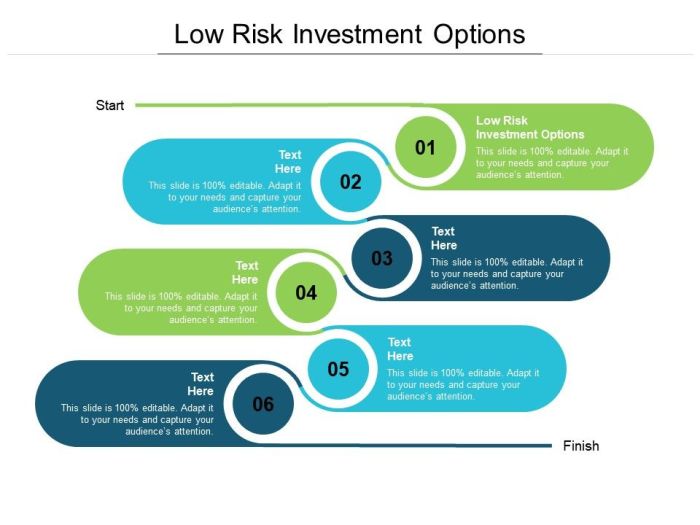
Deposito merupakan salah satu instrumen investasi rendah risiko yang populer di Indonesia. Keuntungannya terletak pada keamanan modal yang terjamin dan kemudahan aksesibilitasnya. Berbeda dengan investasi saham atau reksa dana yang fluktuatif, deposito menawarkan tingkat pengembalian yang relatif stabil, meskipun mungkin tidak setinggi instrumen berisiko lainnya. Mari kita bahas lebih dalam mengenai berbagai aspek investasi deposito.
Jenis-jenis Deposito
Bank di Indonesia menawarkan berbagai jenis deposito untuk memenuhi kebutuhan investor yang beragam. Perbedaannya umumnya terletak pada jangka waktu penempatan dana, fleksibilitas penarikan, dan suku bunga yang ditawarkan. Beberapa jenis deposito yang umum dijumpai meliputi deposito berjangka, deposito on call, dan deposito dengan fitur tambahan seperti auto-debet.
- Deposito Berjangka: Jenis deposito ini memiliki jangka waktu penempatan yang telah ditentukan di awal, misalnya 1 bulan, 3 bulan, 6 bulan, atau 1 tahun. Suku bunga yang ditawarkan biasanya lebih tinggi dibandingkan jenis deposito lainnya karena tingkat risikonya yang lebih rendah bagi bank. Penarikan sebelum jatuh tempo umumnya dikenakan penalti.
- Deposito On Call: Deposito on call menawarkan fleksibilitas yang lebih tinggi karena memungkinkan penarikan dana kapan saja tanpa penalti. Namun, suku bunga yang ditawarkan biasanya lebih rendah dibandingkan deposito berjangka karena tingkat likuiditasnya yang tinggi.
- Deposito dengan Fitur Tambahan: Beberapa bank menawarkan deposito dengan fitur tambahan seperti auto-debet, di mana dana secara otomatis ditransfer dari rekening tabungan ke rekening deposito pada tanggal yang telah ditentukan. Fitur ini memudahkan nasabah untuk secara rutin melakukan investasi.
Persyaratan dan Prosedur Pembukaan Rekening Deposito
Persyaratan dan prosedur pembukaan rekening deposito relatif mudah dan umumnya serupa di berbagai bank. Biasanya, calon nasabah perlu memenuhi persyaratan identitas diri, seperti KTP dan NPWP, serta memiliki rekening tabungan di bank tersebut. Prosesnya melibatkan pengisian formulir aplikasi, penyetoran dana, dan penandatanganan perjanjian deposito.
- Memenuhi persyaratan identitas diri (KTP, NPWP).
- Memiliki rekening tabungan di bank yang bersangkutan.
- Mengisi formulir aplikasi deposito.
- Menyetorkan dana sesuai jumlah yang diinginkan.
- Menandatangani perjanjian deposito.
Faktor-faktor yang Mempengaruhi Suku Bunga Deposito
Suku bunga deposito dipengaruhi oleh beberapa faktor, antara lain suku bunga acuan Bank Indonesia (BI Rate), tingkat inflasi, kondisi perekonomian makro, tingkat likuiditas perbankan, dan persaingan antar bank. Semakin tinggi BI Rate dan inflasi, cenderung suku bunga deposito juga akan meningkat. Namun, faktor-faktor lainnya juga berperan penting dalam menentukan suku bunga yang ditawarkan.
Perbandingan Suku Bunga Deposito Beberapa Bank Terkemuka
Suku bunga deposito dapat bervariasi antar bank dan tergantung pada jenis dan jangka waktu deposito. Sebagai contoh (data ilustrasi, perlu dicek ke bank terkait untuk informasi terkini): Bank A mungkin menawarkan suku bunga 5% untuk deposito berjangka 6 bulan, sementara Bank B menawarkan 5.5% untuk jangka waktu yang sama. Perbedaan ini dapat dipengaruhi oleh strategi masing-masing bank dan kondisi pasar.
| Bank | Jangka Waktu (Bulan) | Suku Bunga (%) |
|---|---|---|
| Bank A | 6 | 5 |
| Bank B | 6 | 5.5 |
| Bank C | 12 | 6 |
Cara Menghitung Keuntungan Investasi Deposito
Keuntungan investasi deposito dihitung berdasarkan suku bunga dan jangka waktu penempatan dana. Rumusnya sederhana: Keuntungan = (Jumlah Deposito x Suku Bunga x Jangka Waktu) / 12. Misalnya, jika Anda menanamkan Rp 10.000.000 dengan suku bunga 5% selama 6 bulan, keuntungannya adalah (10.000.000 x 5% x 6) / 12 = Rp 250.000.
Obligasi Pemerintah (Surat Berharga Negara/SBN)
Obligasi pemerintah, atau yang lebih dikenal di Indonesia sebagai Surat Berharga Negara (SBN), merupakan instrumen investasi yang diterbitkan oleh pemerintah untuk membiayai pembangunan negara. Berinvestasi di SBN berarti Anda meminjamkan uang kepada pemerintah, dan sebagai imbalannya, pemerintah akan membayar bunga secara berkala dan mengembalikan pokok pinjaman Anda pada saat jatuh tempo. Peran SBN dalam perekonomian sangat vital, karena menjadi salah satu sumber pendanaan utama bagi pemerintah dalam menjalankan berbagai program pembangunan, mulai dari infrastruktur hingga pendidikan.
Keberadaan SBN yang stabil dan likuid juga berkontribusi pada stabilitas sistem keuangan negara.
Jenis-jenis SBN yang Dapat Diakses Pemula
Berbagai jenis SBN tersedia, namun beberapa di antaranya lebih mudah diakses oleh pemula. Penting untuk memahami karakteristik masing-masing sebelum berinvestasi. Perbedaan utama terletak pada jangka waktu, kupon (bunga), dan cara penerbitannya.
- Obligasi Negara Seri Retail (ORI): ORI merupakan SBN yang ditujukan khusus untuk individu, dengan nominal terjangkau dan kupon yang dibayarkan secara berkala. Pembeliannya relatif mudah dan dapat dilakukan secara online.
- Surat Perbendaharaan Negara (SPN): SPN merupakan SBN berjangka pendek, biasanya kurang dari setahun. Meskipun menawarkan tingkat pengembalian yang mungkin lebih rendah dibandingkan SBN jangka panjang, risikonya juga relatif lebih kecil karena periode investasinya singkat.
- Sukuk Negara: Bagi investor yang ingin berinvestasi sesuai prinsip syariah, Sukuk Negara merupakan pilihan yang tepat. Sukuk Negara merupakan instrumen investasi berbasis syariah yang diterbitkan oleh pemerintah.
Proses Pembelian SBN Secara Online
Membeli SBN secara online kini sangat mudah dan praktis. Prosesnya umumnya melibatkan beberapa langkah sederhana. Anda perlu membuka rekening di salah satu bank yang ditunjuk sebagai agen penjual SBN, seperti Bank Mandiri, BRI, BNI, atau BTN. Setelah rekening siap, Anda dapat mengakses platform penjualan SBN online yang disediakan oleh bank tersebut. Selanjutnya, Anda perlu memilih jenis SBN yang ingin dibeli, memasukkan jumlah nominal yang ingin diinvestasikan, dan melengkapi proses pembayaran.
Setelah pembayaran berhasil, SBN akan tercatat di rekening Anda. Platform online ini umumnya menyediakan informasi detail mengenai setiap jenis SBN yang ditawarkan, termasuk tingkat bunga, jangka waktu, dan risiko.
Keuntungan dan Risiko Berinvestasi dalam SBN
Investasi pada SBN memiliki keuntungan dan risiko yang perlu dipertimbangkan. Pemahaman yang baik tentang keduanya akan membantu Anda membuat keputusan investasi yang tepat.
- Keuntungan: Tingkat keamanan relatif tinggi karena dijamin oleh pemerintah, imbal hasil (bunga) yang relatif stabil dan kompetitif, serta likuiditas yang baik, terutama untuk SBN jenis ORI.
- Risiko: Meskipun risiko gagal bayar relatif rendah, inflasi dapat mengurangi daya beli imbal hasil yang diterima. Nilai SBN juga dapat berfluktuasi di pasar sekunder, meskipun fluktuasinya biasanya lebih kecil dibandingkan dengan saham.
Perbandingan SBN dengan Investasi Lain
SBN dapat dibandingkan dengan instrumen investasi lain seperti reksa dana dan deposito. Masing-masing memiliki karakteristik yang berbeda dan cocok untuk profil investor yang berbeda pula.
| Karakteristik | SBN | Reksa Dana | Deposito |
|---|---|---|---|
| Tingkat Risiko | Rendah | Sedang (bergantung jenis reksa dana) | Rendah |
| Likuiditas | Sedang (tergantung jenis SBN) | Tinggi | Rendah (tergantung ketentuan bank) |
| Potensi Keuntungan | Sedang | Tinggi (potensial) | Rendah |
| Aksesibilitas | Mudah (khususnya ORI) | Mudah | Mudah |
Tabungan Berjangka
Tabungan berjangka merupakan instrumen investasi rendah risiko yang cocok bagi pemula. Berbeda dengan tabungan biasa yang memungkinkan penarikan kapan saja, tabungan berjangka mengharuskan Anda untuk menyimpan uang selama periode waktu tertentu (jangka waktu) yang telah disepakati di awal. Keuntungannya? Potensi imbal hasil yang lebih tinggi karena bunga yang diberikan biasanya lebih besar dibandingkan tabungan biasa. Artikel ini akan mengupas tuntas seluk-beluk tabungan berjangka, membantu Anda memahami cara kerjanya dan bagaimana memanfaatkannya untuk mencapai tujuan keuangan.
Perbedaan Tabungan Berjangka dan Tabungan Biasa
Perbedaan utama terletak pada fleksibilitas penarikan dana dan suku bunga yang ditawarkan. Tabungan biasa memungkinkan penarikan dana kapan saja tanpa penalti, sementara tabungan berjangka membatasi penarikan sebelum jatuh tempo. Hal ini diimbangi dengan suku bunga yang umumnya lebih tinggi pada tabungan berjangka sebagai kompensasi atas kurangnya fleksibilitas. Suku bunga tabungan biasa biasanya lebih rendah dan fluktuatif, mengikuti kebijakan bank.
Dengan kata lain, Anda menukarkan fleksibilitas akses dana dengan potensi keuntungan yang lebih besar.
Contoh Perhitungan Bunga Tabungan Berjangka
Mari kita ilustrasikan dengan beberapa skenario. Misalnya, Anda menabung Rp 10.000.000,- di tabungan berjangka selama 12 bulan dengan suku bunga 5% per tahun. Bunga yang akan Anda terima adalah Rp 500.000,- (Rp 10.000.000 x 5% x 1 tahun). Jika suku bunga naik menjadi 6% per tahun, bunga yang diterima menjadi Rp 600.000,-. Sebaliknya, jika jangka waktu diperpendek menjadi 6 bulan dengan suku bunga 5% per tahun, bunga yang diterima adalah Rp 250.000,-.
Perhitungan ini mengasumsikan bunga sederhana. Beberapa bank mungkin menawarkan bunga majemuk, di mana bunga yang diperoleh di periode sebelumnya akan ditambahkan ke pokok sehingga bunga periode berikutnya akan lebih besar.
Perbandingan Produk Tabungan Berjangka dari Berbagai Bank
| Bank | Suku Bunga (per tahun) | Jangka Waktu Minimum | Keuntungan Tambahan |
|---|---|---|---|
| Bank A | 5,5% | 3 bulan | Asuransi jiwa |
| Bank B | 6% | 6 bulan | Reward poin |
| Bank C | 5% | 12 bulan | Bebas biaya administrasi |
| Bank D | 5,8% | 12 bulan | Akses ke layanan prioritas |
Catatan: Suku bunga dan keuntungan tambahan dapat berubah sewaktu-waktu. Informasi ini merupakan ilustrasi dan perlu dikonfirmasi langsung ke bank terkait.
Strategi Pengelolaan Tabungan Berjangka untuk Mencapai Tujuan Keuangan
Untuk mencapai tujuan keuangan tertentu, seperti membeli rumah atau pendidikan anak, Anda perlu merencanakan strategi pengelolaan tabungan berjangka. Tentukan terlebih dahulu target keuangan Anda dan jangka waktu yang dibutuhkan. Kemudian, bagi total dana yang dibutuhkan menjadi beberapa bagian dan tempatkan di tabungan berjangka dengan jangka waktu yang berbeda-beda, sesuai dengan kebutuhan dana di masa mendatang. Misalnya, jika Anda membutuhkan dana dalam 3 tahun, Anda dapat menempatkan sebagian dana di tabungan berjangka 1 tahun, sebagian lagi di tabungan berjangka 2 tahun, dan sisanya di tabungan berjangka 3 tahun.
Hal ini mengurangi risiko kekurangan dana saat dibutuhkan.
Tabungan Berjangka sebagai Pondasi Investasi Jangka Panjang
Tabungan berjangka dapat menjadi pondasi yang kuat untuk investasi jangka panjang. Dengan mendapatkan bunga secara konsisten, Anda dapat mengumpulkan modal awal yang lebih besar untuk berinvestasi di instrumen lain yang berpotensi memberikan keuntungan lebih tinggi, seperti reksa dana atau saham. Namun, penting untuk diingat bahwa investasi selalu memiliki risiko. Tabungan berjangka berperan sebagai bantalan risiko dan sumber dana cadangan, sehingga Anda dapat mengelola investasi jangka panjang dengan lebih tenang dan terencana.
Memulai investasi di usia muda, bahkan dengan modal kecil, adalah langkah cerdas untuk masa depan finansial yang aman. Memilih opsi investasi rendah risiko seperti yang dibahas di atas merupakan strategi bijak bagi pemula. Dengan memahami mekanisme masing-masing instrumen dan melakukan diversifikasi portofolio, Anda dapat meminimalkan risiko dan memaksimalkan pertumbuhan aset secara bertahap. Ingatlah untuk selalu melakukan riset dan mempertimbangkan faktor-faktor pribadi sebelum membuat keputusan investasi.
Langkah kecil yang konsisten akan membawa Anda menuju kebebasan finansial yang lebih besar.
Pertanyaan yang Sering Muncul
Apa perbedaan utama antara reksa dana pasar uang dan deposito?
Reksa dana pasar uang berinvestasi di berbagai instrumen pasar uang, sehingga menawarkan sedikit diversifikasi dan potensi keuntungan yang sedikit lebih tinggi dibandingkan deposito. Deposito lebih sederhana, hanya menyimpan uang di satu bank dengan suku bunga tetap.
Apakah saya perlu membayar pajak atas keuntungan investasi rendah risiko?
Ya, umumnya keuntungan investasi dikenakan pajak, besarannya bervariasi tergantung jenis investasi dan peraturan perpajakan yang berlaku. Konsultasikan dengan konsultan pajak untuk informasi lebih detail.
Berapa lama waktu yang dibutuhkan untuk melihat keuntungan signifikan dari investasi rendah risiko?
Keuntungan signifikan bergantung pada jumlah investasi awal, suku bunga, dan jenis investasi. Investasi rendah risiko cenderung memberikan keuntungan secara bertahap, bukan dalam jangka pendek.
Apakah ada biaya tambahan yang perlu dipertimbangkan saat berinvestasi?
Ya, beberapa investasi memiliki biaya administrasi, biaya manajemen (khususnya reksa dana), atau biaya lainnya. Pastikan untuk memahami semua biaya sebelum berinvestasi.
Bagaimana cara saya memilih bank atau perusahaan investasi yang terpercaya?
Pilihlah bank atau perusahaan investasi yang terdaftar dan diawasi oleh otoritas yang berwenang, seperti Otoritas Jasa Keuangan (OJK) di Indonesia. Periksa reputasi dan track record mereka sebelum berinvestasi.




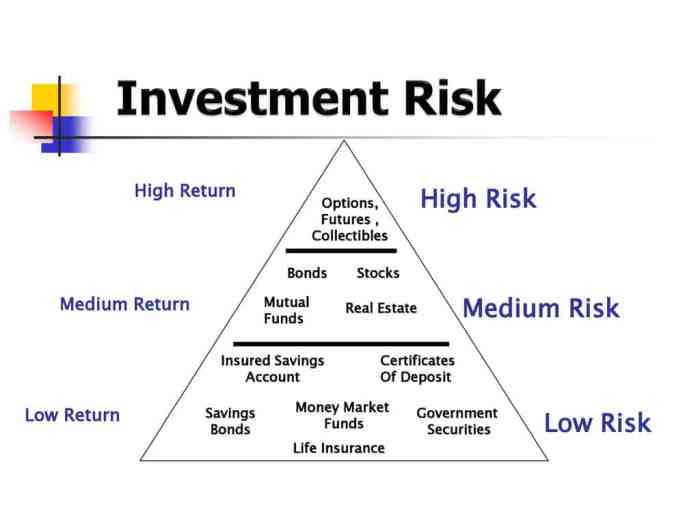


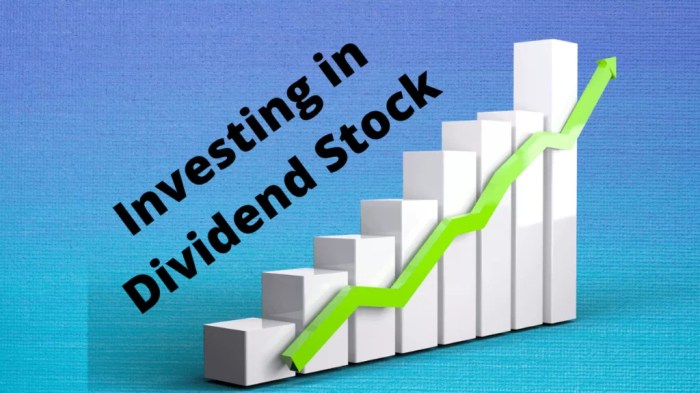
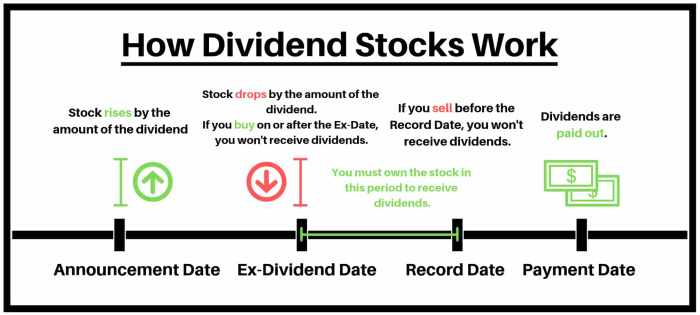
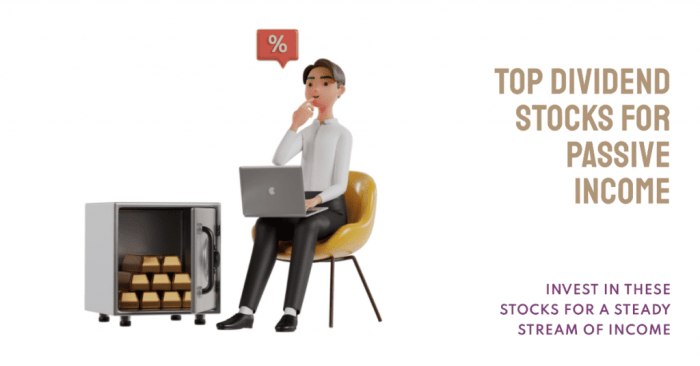
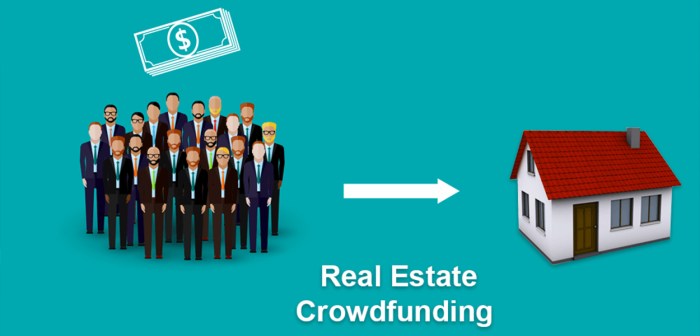
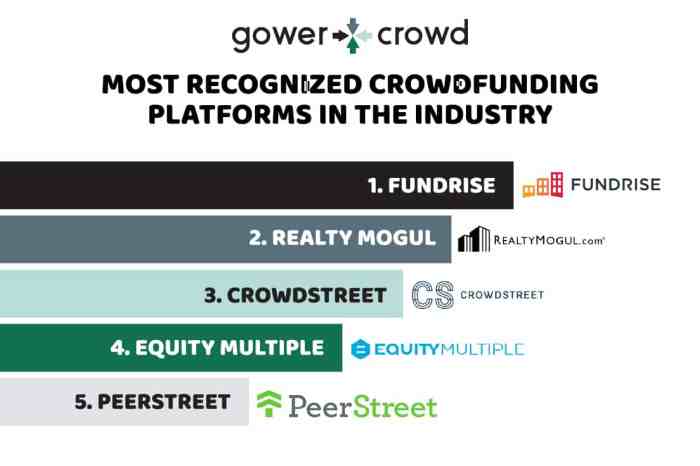


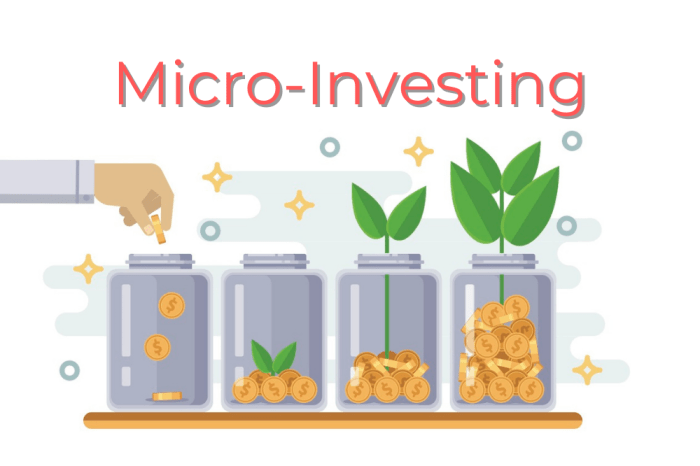


 Implementing methods and procedures to ensure everyone seems to be paying attention to the details is advisable. Additionally, particulars for varied advertising plans, finances projections, as well as capital enhancements plans are all crucial for success. It doesn’t matter how old an image, painting, video, music, or story is; so long as you’ve retained the rights to it, you may continue licensing it out for others to use even when you actively work on a newer project, which you can then license as effectively whereas you work on newer-er projects. While you may be capable to run a lodge with no “massive picture strategy” in place, it isn’t recommended. While there’s a very good probability you realize at the least some of what is involved if you are reading this article, we’re going to interrupt it down into the 5 most essential things it is advisable to find out about managing hotel operations. It could take more time to save lots of a large down fee, but doing so may assist you to secure financing that makes you extra comfortable. Take the time to make use of inspections to make sure all staff are following the general strategy/plan for success.
Implementing methods and procedures to ensure everyone seems to be paying attention to the details is advisable. Additionally, particulars for varied advertising plans, finances projections, as well as capital enhancements plans are all crucial for success. It doesn’t matter how old an image, painting, video, music, or story is; so long as you’ve retained the rights to it, you may continue licensing it out for others to use even when you actively work on a newer project, which you can then license as effectively whereas you work on newer-er projects. While you may be capable to run a lodge with no “massive picture strategy” in place, it isn’t recommended. While there’s a very good probability you realize at the least some of what is involved if you are reading this article, we’re going to interrupt it down into the 5 most essential things it is advisable to find out about managing hotel operations. It could take more time to save lots of a large down fee, but doing so may assist you to secure financing that makes you extra comfortable. Take the time to make use of inspections to make sure all staff are following the general strategy/plan for success. Inspections – Various inspections are also vital for clean operation of a hotel. Some of these resorts are filing bankruptcy to guard assets that they’ve or are promoting hotel buildings off in a market that isn’t finest for opening a new hotel operation. Properties, including those whose initial purchase value could also be properly under present market associated prices, can and still do have the potential to appreciate in worth pretty quickly and as such are rising in reputation with property investors. The attraction of the next rate of return on the investment can be another reason for the progress in the real estate market Dubai as many property buyers from around the globe are tempted to invest in Dubai property market. Real Estate Ads This is the apparent place to begin in search of investment properties. Choosing a very good locality is very important, also considering the benefit of journey to work and the accessibility of essential shops around your house. The good news is that arising with a method is just not difficult, particularly if you’re employed with people who have a few years of experience in managing resorts. The administration ought to have a technique in place. Strategy – Speaking of methods and plans, that is considered one of the principle keys for managing hotel operations.
Inspections – Various inspections are also vital for clean operation of a hotel. Some of these resorts are filing bankruptcy to guard assets that they’ve or are promoting hotel buildings off in a market that isn’t finest for opening a new hotel operation. Properties, including those whose initial purchase value could also be properly under present market associated prices, can and still do have the potential to appreciate in worth pretty quickly and as such are rising in reputation with property investors. The attraction of the next rate of return on the investment can be another reason for the progress in the real estate market Dubai as many property buyers from around the globe are tempted to invest in Dubai property market. Real Estate Ads This is the apparent place to begin in search of investment properties. Choosing a very good locality is very important, also considering the benefit of journey to work and the accessibility of essential shops around your house. The good news is that arising with a method is just not difficult, particularly if you’re employed with people who have a few years of experience in managing resorts. The administration ought to have a technique in place. Strategy – Speaking of methods and plans, that is considered one of the principle keys for managing hotel operations.

 Making such an enormous buy without all the necessary info collected beforehand is simply plainly silly. In that case, this text will offer you insights into how one can purchase an power-efficient house. Whatever the explanation, right here you can find detailed insights into the renting process – from the beginning to the very finish. While it is initially a extra significant funding, it would undoubtedly keep your private home hotter in the long term. Before you speak to them face to face attempt to run a test on their background. Check the air conditioners, too – are they installed as window items or involved ducts? Move out cleaners are accustomed to the entire safety deposit issue they usually know what they’re doing. You may be required to make use of the service of finish of tenancy cleaners – verify your tenancy agreement. Energy effectivity is one of those phrases that advertisers usually use to market their merchandise. Many banks allow a minimum deposit of Rs 5000. For an NRI or foreign foreign money deposit, the foundations and terms and situations are different. Some banks don’t charge anything for premature withdrawal. It is a profitable business for banks.
Making such an enormous buy without all the necessary info collected beforehand is simply plainly silly. In that case, this text will offer you insights into how one can purchase an power-efficient house. Whatever the explanation, right here you can find detailed insights into the renting process – from the beginning to the very finish. While it is initially a extra significant funding, it would undoubtedly keep your private home hotter in the long term. Before you speak to them face to face attempt to run a test on their background. Check the air conditioners, too – are they installed as window items or involved ducts? Move out cleaners are accustomed to the entire safety deposit issue they usually know what they’re doing. You may be required to make use of the service of finish of tenancy cleaners – verify your tenancy agreement. Energy effectivity is one of those phrases that advertisers usually use to market their merchandise. Many banks allow a minimum deposit of Rs 5000. For an NRI or foreign foreign money deposit, the foundations and terms and situations are different. Some banks don’t charge anything for premature withdrawal. It is a profitable business for banks.